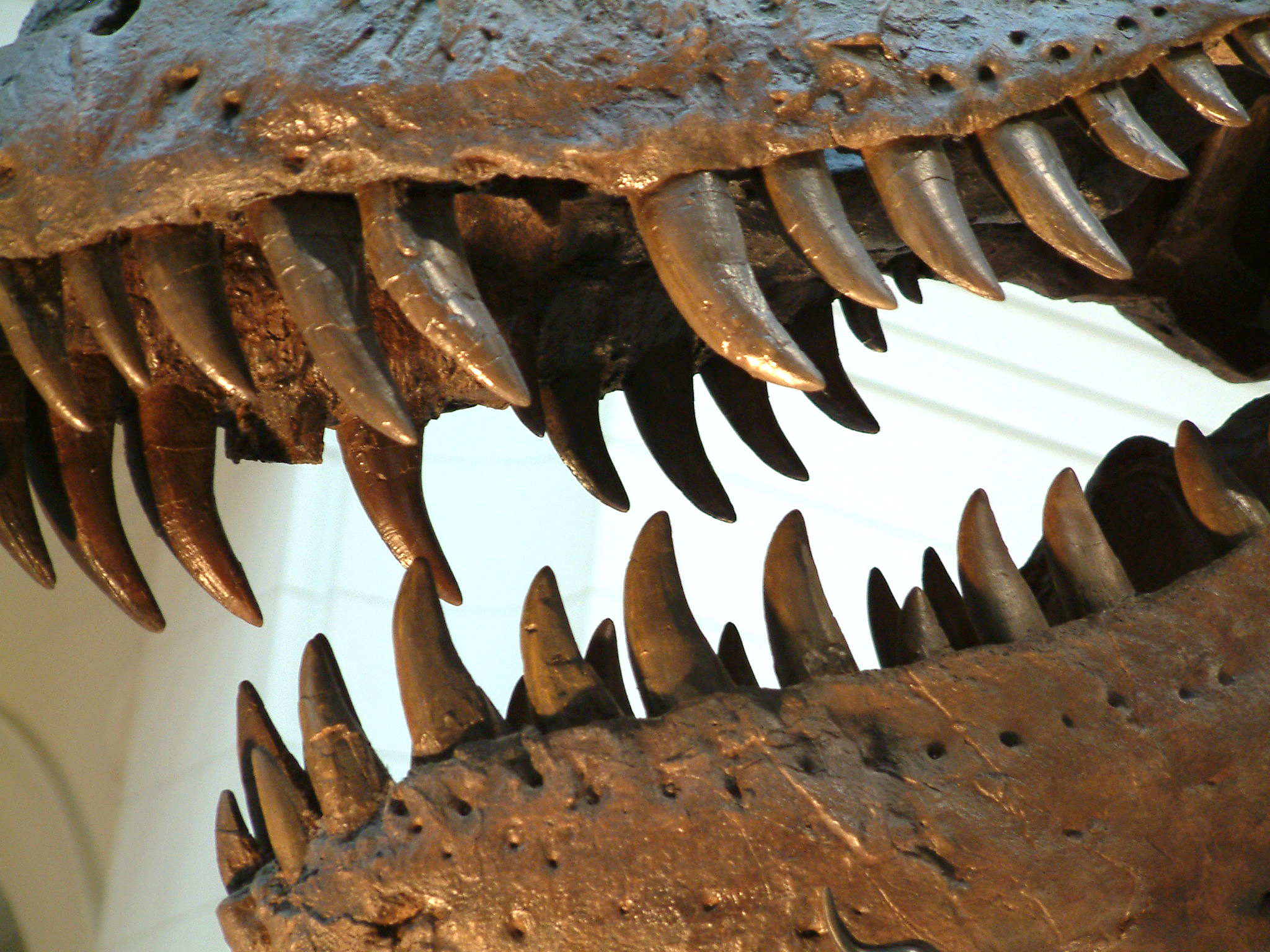
Credit: James St. John, CC BY 2.0, via Wikimedia Commons
Remember the movie Jurassic Park? Or every time you’ve seen a reconstruction of a T. rex in a museum? Probably the image that sticks with you is the exposed daggers of fearsome teeth.
Well, some Canadian grad students may have proven that image wrong.
They discovered something rather elemental: T. rex teeth have very thin enamel. Even thinner than the enamel on mammal teeth.
But early paleontologists had based their tyrannosaur reconstructions on crocodiles and alligators, which have exposed teeth.
It turns out that the enamel on their teeth is very thick, enough to withstand constant drying out and wear from their environment.
Teeth with thin enamel need to be protected and kept wet with saliva. And for that, you need lips. That’s why most lizards have them.
The Komodo dragon, for instance. It’s one of the few living reptiles that has teeth like a therapod dinosaur. But you’ve probably never seen them, because they’re hidden behind the lizard’s scaly lips.
A closer examination of their tooth and jaw structure, and those of other modern lizards, has indeed revealed that theropod mouth anatomy more closely resembled lizards than crocodiles.
So T. rex probably had a face like a Komodo dragon. And like them, probably lacked the muscles to expose its teeth in a fearsome snarl.
That toothy grin may sell movies. But in reality, T. rex had lizard lips.
Background
Synopsis: Years ago, paleontologists reasoned that Tyrannosaurus rex must have had jaws with exposed teeth similar to reptiles like crocodiles. But recently, scientists have given the teeth of these dinosaurs a second look and determined they were covered by a thin layer of enamel that would be damaged if left exposed. Lips protect tooth enamel from drying out and from wearing down, so preservation of this delicate layer indicates T. rex had lips like present-day Komodo dragons.
- Past reconstructions of theropod dinosaurs like T. rex have been featured in scientific exhibits and in Hollywood movies with fearsome exposed dagger-like teeth.
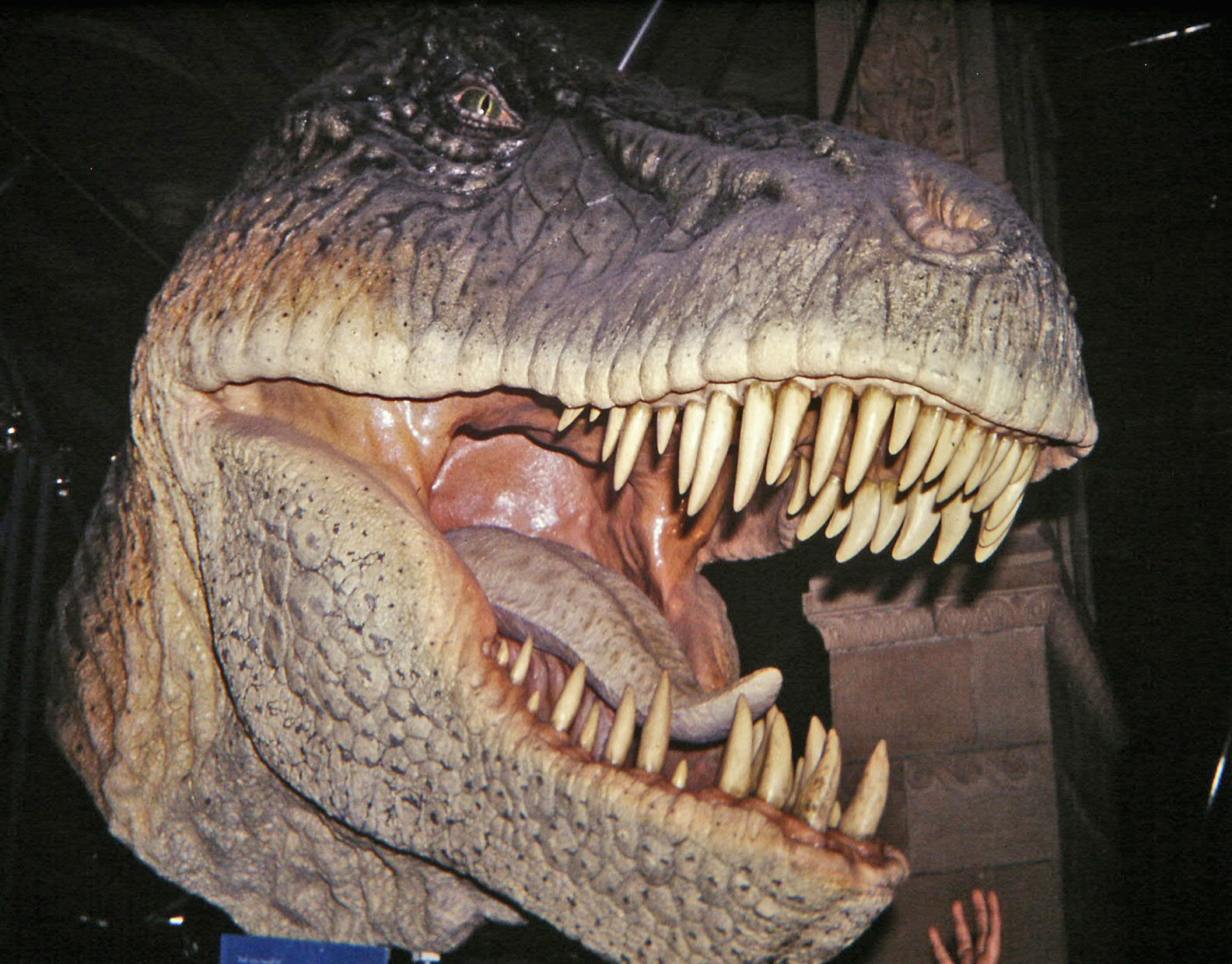
This may be a faulty reconstruction of a T. rex at the London Natural History Museum because it depicts an animal without lips that cover its fearsome teeth. Recent research suggests these predators actually had lizard-like lips that protected their tooth enamel.
Credit: Gary Todd from Xinzheng, China, CC0, via Wikimedia Commons- Early paleontologists imagined that huge therapod teeth were like crocodile and alligator teeth that remain exposed when their mouths close. This was a particularly popular view in the 1980s and 1990s, when movies like Jurassic Park were filmed.
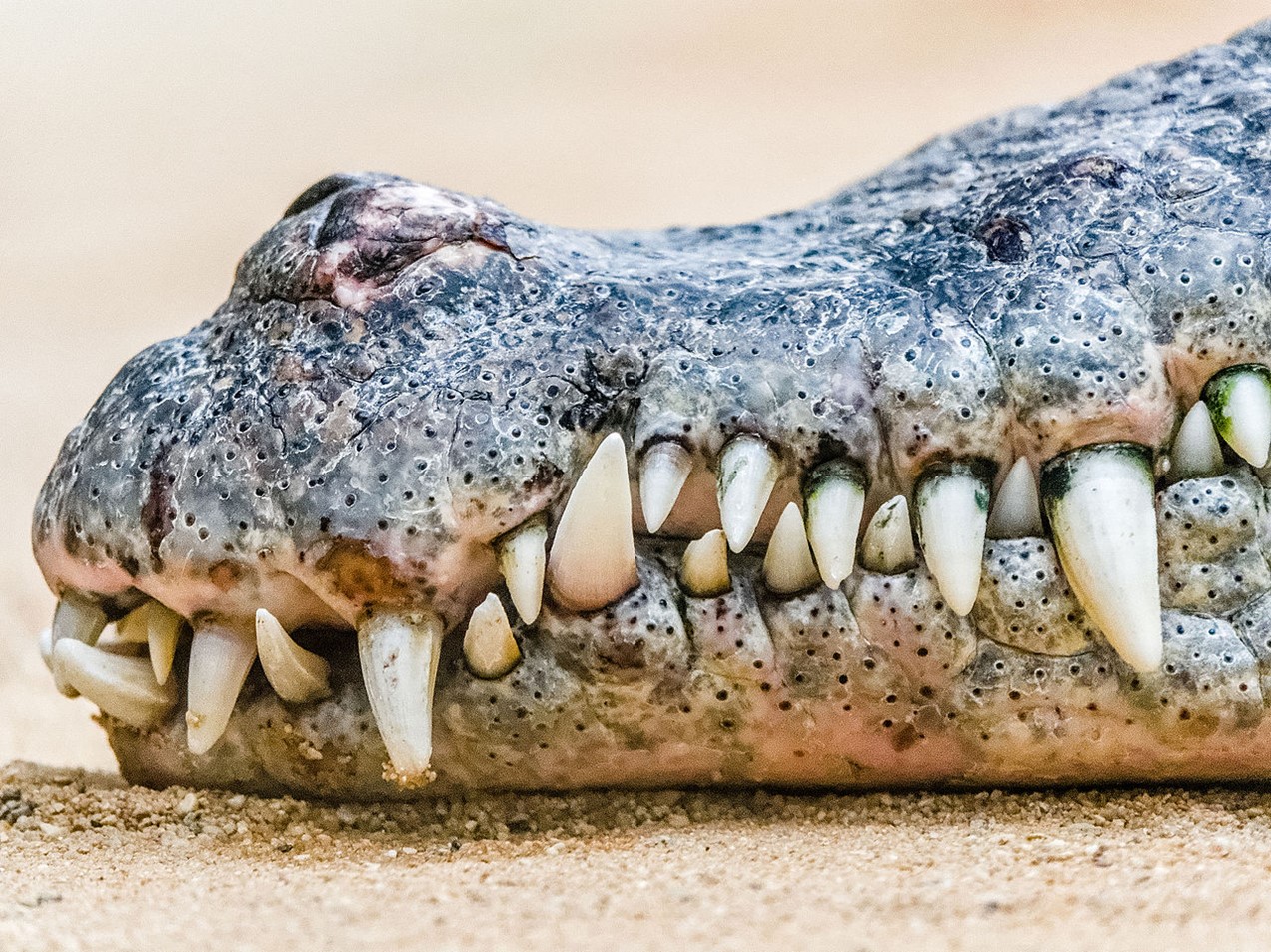
The exposed teeth of a Nile crocodile guided past theropod facial reconstructions. Crocodile teeth have enamel that stays hydrated because they live in water, but the teeth show considerable wear.
Credit: Ermell, CC BY 3.0, via Wikimedia Commons
- Early paleontologists imagined that huge therapod teeth were like crocodile and alligator teeth that remain exposed when their mouths close. This was a particularly popular view in the 1980s and 1990s, when movies like Jurassic Park were filmed.
- Other reptilian relatives, like iguanas and Komodo dragons do have scaly lips that cover their teeth.
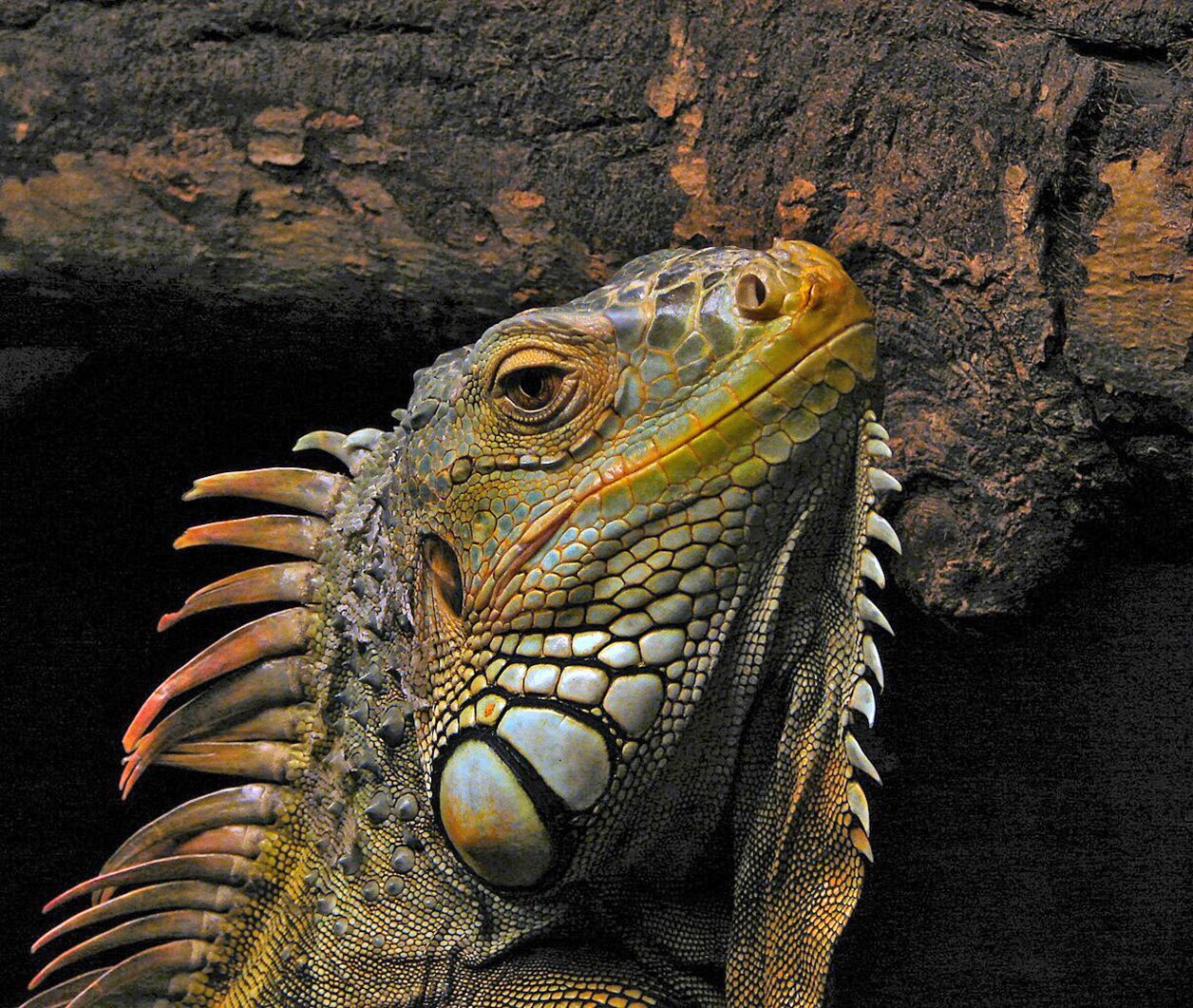
An iguana from Oslo Reptile Park.
Credit: Bjørn Christian Tørrissen, CC BY-SA 4.0, via Wikimedia Commons- The Komodo dragon (Varanus komodoensis), also known as the Komodo monitor, is a member of the monitor lizard family Varanidae that is endemic to certain Indonesian islands.
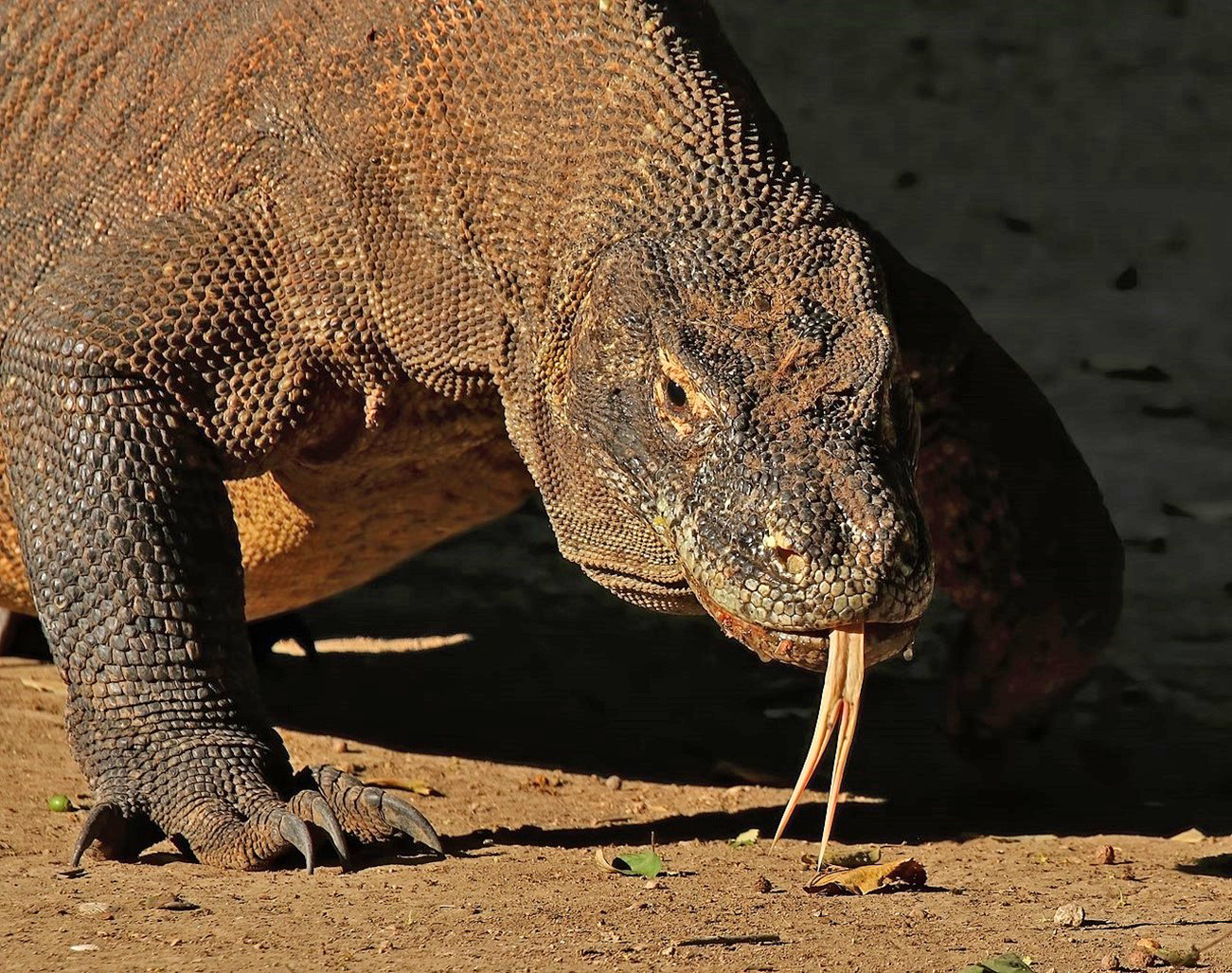
A Komodo dragon in Indonesia’s Komodo National Park.
Credit: Charles J. Sharp, CC BY-SA 4.0, via Wikimedia Commons - It is the largest extant species of lizard, growing to a maximum length of 10 ft (3 m) and weighing up to 150 lb (70 kg).
- These huge monitor lizards are one of the few living reptiles with teeth similar to those found in fossil therapods.
- Komodo dragons are apex predators and dominate the ecosystems in which they live, hunting invertebrates, birds and mammals.
- The earliest fossil record of a Komodo dragon is 3.8 million years old (Pliocene).
- The Komodo dragon (Varanus komodoensis), also known as the Komodo monitor, is a member of the monitor lizard family Varanidae that is endemic to certain Indonesian islands.
- Today there are no known preserved soft tissue fossil specimens of the facial skin of therapods that might guide our understanding of the nature of their lips, but some clever Canadian graduate students used other clues to solve the mystery of the theropod smile.
- The researchers examined skulls and teeth of theropods and discovered that the fossilized teeth are covered in a very thin layer of tooth enamel (thinner than the enamel on mammal teeth).
- Enamel needs to stay hydrated or it cracks, so the therapods would have needed a way to seal their saliva-coated teeth in their mouths for the delicate layer of fossil enamel to function as a protective tooth covering.
- Crocodiles have thicker enamel that stays wet in their watery habitats, but they go through as many as 3,000 teeth in a lifetime. It appears that it took T. rex two years to produce a replacement tooth, so they had to keep the teeth they had.
- Examination of tooth structure, wear patterns and jaw morphology of modern lipped and lipless lizards showed that theropod mouth anatomy bears a closer resemblance to lizards than crocodiles. Tooth wear patterns in lipless animals were distinctive and much different than wear patterns in lipped animals.
- Small holes distributed along the jaws of modern lipped reptiles provide space for nerves and blood vessels that supply tissues around the mouth, and similar structures are found in fossil therapods.
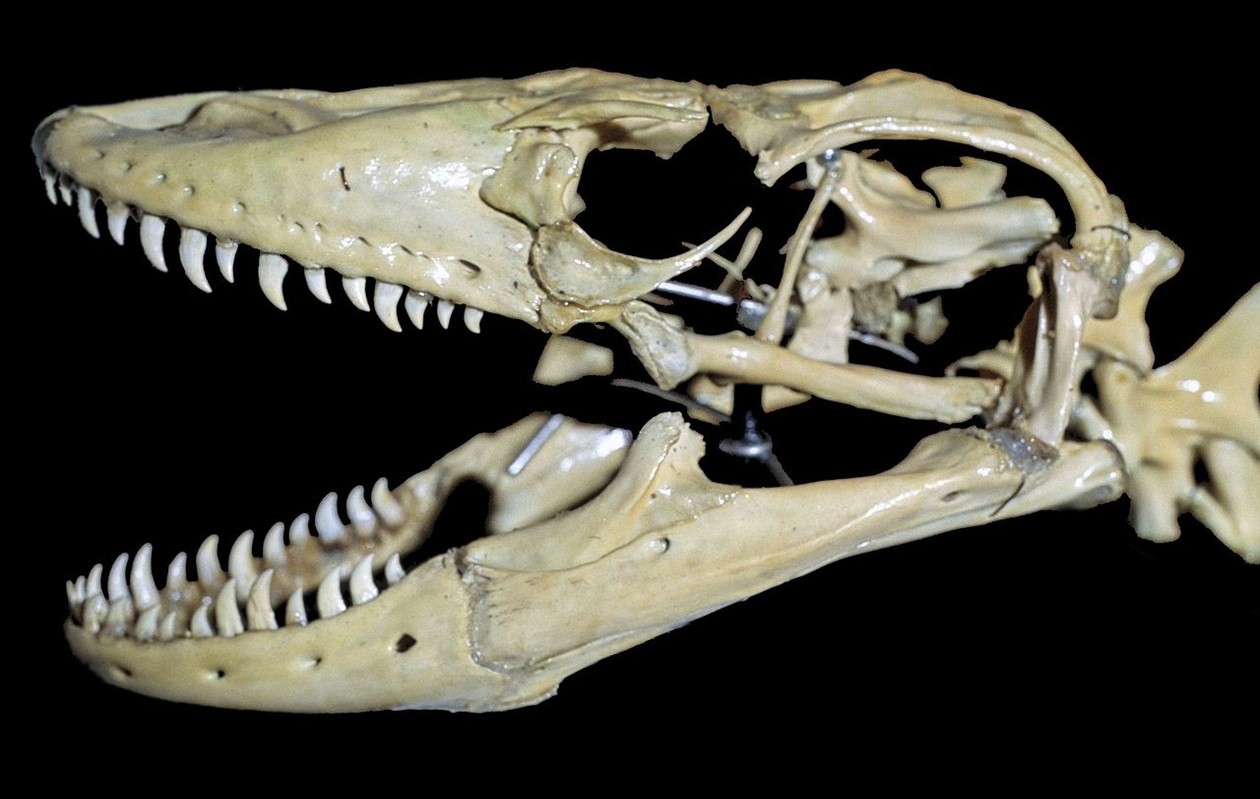
Skull of Komodo dragon with serrated teeth and holes that provide nerve and blood supply pathways. Compare to the photo of the T. rex skull.
Credit: Danadi Sutjianto, CC BY-SA 4.0, via Wikimedia Commons - Models of mouth closure for lipless theropods required crushing or disarticulation of jaw bones to completely close and seal the mouth.
- Some monitor lizards have teeth as large as therapods in proportion to their skull size yet can still cover their teeth with their lips.
- So scaly reptilian lips seem likely on predatory therapods like T. rex, but their lips would not have had the muscles necessary to snarl like mammals or to pucker up like human lips.
- Maybe one day scientists will find a fossil theropod with skin and muscles so well preserved that the mystery will be solved conclusively.

